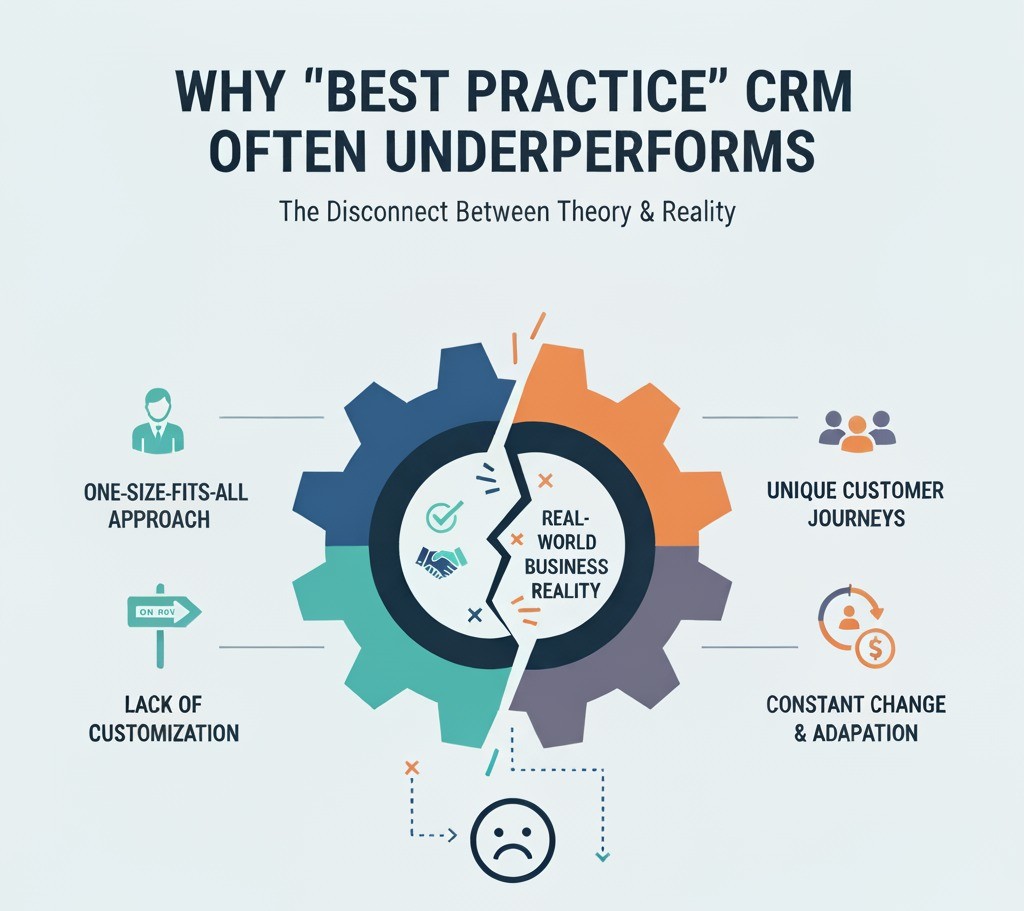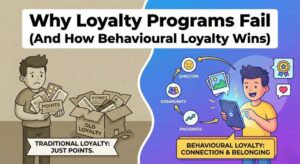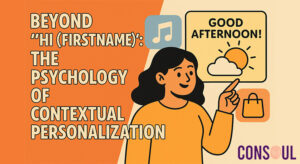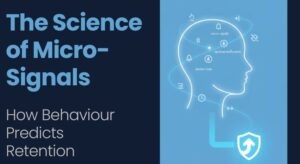How generic playbooks can backfire in context-specific businesses
Customer Relationship Management (CRM) is no longer a nice-to-have — it’s at the center of how businesses engage, retain, and grow their customer base. But as CRM tools and templates have proliferated, so has a dangerous mindset: that simply adopting “best practices” guarantees results.
In reality, many businesses that implement so-called best practice CRM journeys often discover that these approaches underperform, failing to deliver the promised improvements in retention, engagement, and loyalty. Why does this happen? The answer lies in the nature of “best practices” themselves — they’re generic by design, and your business isn’t.

The Myth of “Best Practice” in CRM
The term “best practice” is appealing because it promises predictability. It suggests that if something worked for one brand, it will work universally. CRM vendors, consultants, and even some marketing teams promote playbooks as shortcuts to better customer journeys — onboarding templates, engagement cadences, reactivation flows.
But what’s missing is context.
Your customer journey is shaped by what you sell, to whom, in what market, and under what conditions. What worked for a high-frequency transactional eCommerce brand might fail for a financial services provider, where trust and relationship-building are key. Simply copying and pasting a CRM framework ignores the fundamental differences in customer behavior and business models.
Context Matters: CRM must reflect business differences
Customer expectations vary drastically by industry, product, and geography. Consider these examples:
- A D2C beauty brand where customers purchase monthly and expect quick communication vs.
- A mortgage lender where decision cycles stretch over months and involve complex paperwork.
A single cadence or messaging strategy cannot serve both.
Even within industries, purchase frequency, buyer intent, and the emotional stakes of a decision dictate different approaches. What’s the average lifecycle of your customer? What’s the key trigger for churn? Which touchpoints matter most?
Failing to adjust CRM programs for these nuances often results in two things: wasted effort and frustrated customers.
When “best practice” creates friction
Ironically, blindly following best practices can actively harm customer relationships.
Some common issues include:
- Over-automation: Treating every customer the same leads to generic, impersonal experiences.
- Inappropriate cadence: Communicating too frequently or too infrequently because a playbook dictated it, not because the customer signaled it.
- Channel mismatch: Sending email when the customer prefers WhatsApp or push notifications.
- Ignoring cultural and regional preferences: A campaign template from one market may alienate customers in another.
This friction erodes trust and reduces engagement. When customers sense that interactions are automated and irrelevant, they disengage quickly — and regaining that engagement becomes costly.
The Cost of Ignoring Business-Specific Signals
CRM works best when it helps you respond to real behavior, not just run campaigns.
By rigidly following best practices, brands miss the signals that matter most to their specific customer base:
- Low-frequency, high-value customers might churn quietly if journeys are geared toward frequent buyers.
- Loyalty customers could be sent irrelevant cross-sell offers if segmentation ignores actual purchase patterns.
- Onboarding flows could overwhelm customers if they aren’t aligned with the complexity of the product or service.
Every day a CRM journey fails to recognize these nuances, it costs real revenue — not just in lost conversions but in wasted marketing resources and declining trust.
Principles for a Context-Aware CRM Strategy
So how should businesses think differently?
- Start with your customer’s behavior, not a template:
Map your unique customer journey based on how your customers actually engage, buy, and return. - Segment intelligently:
Go beyond demographics or transaction history — segment by lifecycle stage, engagement patterns, and intent signals. - Balance automation with relevance:
Automated doesn’t have to mean impersonal. Invest in dynamic journeys that adjust based on recent actions (or inactions). - Ensure flexibility in your MarTech stack:
Best-practice templates often reflect the limitations of rigid systems. Ensure your tools allow iteration and customization as your insights evolve. - Test, learn, iterate:
Your CRM journey is never “done.” Continually monitor performance and adapt flows based on real outcomes, not assumptions.
Case Examples: How Tailored CRM Beats Best Practice
At ConSoul, we’ve seen firsthand how tailoring CRM to context outperforms generic approaches.
For example:
- In OTT platforms, we helped move beyond a standard cart abandonment-style “resume watching” reminder to journeys triggered by content category, device usage, and viewer recency, lifting reactivation rates by 2x.
- In retail, we redesigned onboarding to recognize that a first-time buyer of a premium product required slower, more educational follow-up rather than immediate cross-sell nudges — improving second purchase rates significantly.
- For a financial services client, we removed unnecessary communications during sensitive onboarding stages (like KYC and documentation) where a “best practice” flow would have overwhelmed users.
In each case, success came not from reinventing CRM fundamentals but from applying them in ways that made sense for the customer and business.
CRM is Strategy, not Software
At its core, CRM is not about software or templates — it’s about relationships.
A CRM journey that works beautifully for one business might underperform dramatically for another simply because customer expectations, purchase cycles, and behavior patterns are different.
The lesson is clear: best practices can be a starting point, but they should never be the finish line.
Final Takeaway
If your CRM program isn’t delivering, it’s worth asking:
Are you following what’s “best” for another business? Or have you tailored your approach to fit your unique customer, product, and market context?
At ConSoul, we help brands move beyond templates — designing CRM strategies that reflect the real journeys of their customers, not just the playbook of the moment.



